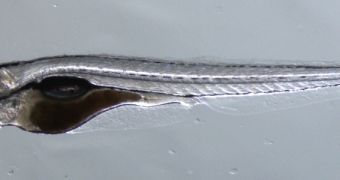According to the conclusions of a new study led by investigators at the Northwestern University, it would seem that humans and fish such as the transparent zebrafish have a lot more in common than first thought.
The team was able to discover locomotion patterns in the sea creature that are similar to our own. This discovery could reveal the mechanisms that led to walking in mammals, including humans.
The new investigation was centered entirely on locomotion. Scientists were very interested to learn more about how mammals, and land animals in general, developed their ability to walk. This is no mean feat, since it requires tremendous muscle and nerve coordination to pull off.
In a series of experiments, neuroscientists Martha W. Bagnall and David L. McLean analyzed the spinal cord circuits of zebrafish, and determined that the neural pathways they contain are significantly more complex than originally established; but this complexity may help us learn more about ourselves.
Even simple fish such as the zebrafish have differential control over their musculature, meaning that individual neurons in their spinal cord are mapped to specific muscles or portions of muscles. Experts believe this is one of the most important pre-requisites for developing complex locomotion patterns.
In the case of these small, transparent marine creatures, this means that the neural pathways controlling their dorsal fins and muscles were separated, and transmitted different impulses, than the circuitry involved in controlling the fins on the ventral side of their bodies.
“Evolution builds on pre-existing patterns, and this is a critical piece of the puzzle. Our data help clarify how the transition from water to land could have been accomplished by simple changes in the connections of spinal networks,” McLean says.
“This knowledge will put us in a better position to devise more effective therapies for when things go wrong with neural circuits in humans, such as spinal cord damage,” the team leader goes on to explain.
Details of the research effort are published in a paper appearing in the January 10 issue of the top journal Science. Most of the fish in this study were juveniles at the time of the research, because they are see-through at that age, making them easier to analyze.
“If you want to fix something, you have to know how it works in the first place. Given that the fish spinal cord works in a similar fashion to our own, this makes it a fantastic model system for research,” McLean concludes.

 14 DAY TRIAL //
14 DAY TRIAL //